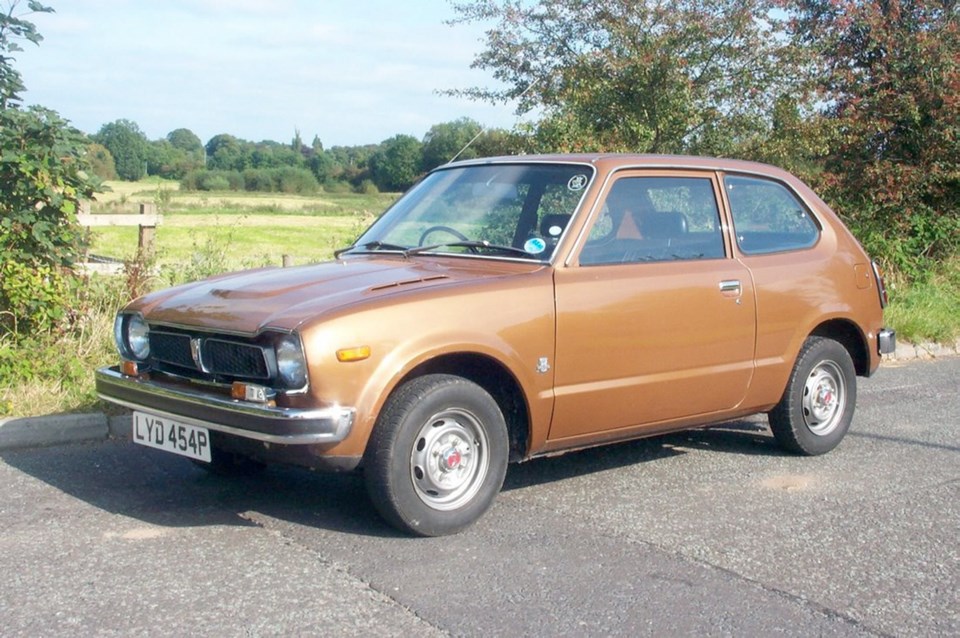The Honda Civic appeared on the automotive scene in 1973 only 11 years after Honda Motor Co. Ltd. of Tokyo built its first car, a tiny roadster powered by a 531 cc engine, enlarged in stages to 800 cc.
It traced its roots back to when mechanic Soichiro Honda began installing gasoline engines on bicycles after the Second World War. He prospered so well that by 1959, Honda was the world’s largest motorcycle manufacturer.
When Honda expanded into cars, its early models relied heavily on motorcycle technology, gradually evolving into the 1967 N-series front-wheel drive cars that somewhat resembled the English Mini.
Honda began exporting its tiny 600 model to North America in the early 1970s. Unfortunately, while the twin-cylinder, overhead-cam, air-cooled engines in the coupes and sedans proved economical, they were marginal for North American driving. This prompted Honda to begin designing a larger model with greater international acceptability.
The result was the Honda Civic, and by a stroke of good fortune its arrival in North America coincided with the first 1970s oil crisis triggered in October, 1973 when Egypt attacked Israel on the eve of Yom Kippur.
With U.S. support, Israel was victorious, causing the humiliated Arab world to strike back with the one strategic weapon it had: oil. It embargoed shipments to the West and before it ended, the price had quadrupled from about $3 U.S. a barrel to $12.
North American motorists, particularly in the U.S., panicked. There were long, sometimes violent gasoline line-ups and motorists became more concerned about gasoline’s supply than its price.
It was a propitious time to launch a small, fuel-efficient car and it catapulted Honda into the automotive limelight. It made cars acceptable that were even smaller than the Toyota and Volkswagen.
Although not as tiny as the BMC Mini, the Civic was still diminutive. But within its over-all 3,551 mm (139.8 in.) length and 1,501 mm (59.1 in.) width, it accommodated four passengers, although its 7.7 cu ft of trunk space was limited.
A wheelbase of only 2,200 mm (86.6 in.) made rear legroom snug, and taller passengers’ heads could brush the roof. But there were compensations. With only two passengers aboard the hatchback’s rear seat folded down to provide an enormous 20.7 cubic feet of cargo space, making the Civic a utilitarian little hauler.
As in the Mini, the Civic’s engine was positioned transversely between the front wheels but its transmission was on the end of the engine, not in the sump like the Mini’s. The 1,170 cc (71.3 cu in.) overhead cam four drove the front wheels through a four-speed manual transmission. Suspension was four-wheel independent via front and rear MacPherson struts and brakes were power assisted disc front/drum rear.
Performance was adequate. With 50 horsepower, the 730 kg (1,610 lb) Civic, according to Road & Track, (5/73) accelerated to 97 km/h (60 mph) in 14.1 seconds and reached a top speed of 146 km/h (91 mph).
But motorists weren’t really buying Civics for high performance, although they did delight in zipping through tiny holes in traffic, parking on the proverbial dime and shifting the buttery-smooth transmission. They were buying economy and the Civic easily yielded 35 to 40 mpg in normal driving.
While the Civic was a wonderful little car in many aspects, there were some problems. Rust began appearing too early in fenders and structural and suspension components. Recalls occurred and Honda’s reputation suffered, although it gradually recovered.
The Honda Motor Co. was clearly on its way in the four-wheel world. But as clever as the Civic was, the talented Japanese engineers would prove they could do more than just design a good little economy car.
In the early 1970s, as North American auto emission standards were tightening, American automakers were complaining bitterly about being forced to fit expensive catalytic converters and power-robbing devices like air pumps.
Honda set to work and came up with a low-pollution three-valves-per-cylinder engine. They called it Compound Vortex Controlled Combustion (CVCC) and in 1973 U.S. Environmental Protection Agency tests it comfortably met all emission standards without a catalyst or other devices.
American engineers responded that it was easy to do on a small four-cylinder engine but not Detroit’s large powerplants. So Honda engineers quietly fitted the CVCC system to two 5.7 litre (350 cu in.) Chevrolet V-8s, which also passed the EPA tests. There were some red faces around Detroit.
The Honda Motor Co. soon moved up market, adding the Accord, which was really an enlarged Civic, and then the luxury Acura. It went from strength to strength and is now a full-fledged player in the competitive global automobile marketplace, success that really began with that original little 1973 Civic.



